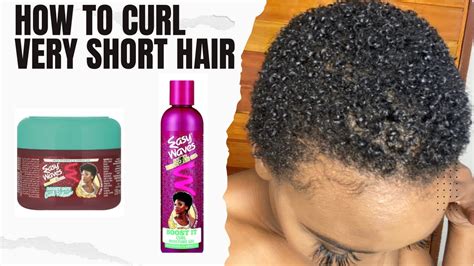Introduction: Embracing Your Natural Beauty
Curly hair is a beautiful and unique expression of natural style. However, many individuals with curly hair seek ways to alter or enhance its texture due to personal preferences or societal standards. Curly hair relaxers are chemical treatments designed to temporarily alter the structure of curly hair, making it straighter and smoother.

10 Essential Facts About Curly Hair Relaxers
-
Effectiveness: Relaxers are highly effective in straightening curly hair, allowing for a wide range of styling options.
-
Chemical Composition: Relaxers contain strong chemicals, typically sodium hydroxide or guanidine hydroxide, which break down the disulfide bonds in the hair structure.
-
Irreversibility: The chemical process of relaxing is irreversible, meaning that once treated, the hair will retain its new texture until cut.
-
Damage Potential: Relaxers can cause damage to the hair, including dryness, breakage, and thinning if not used correctly or by professionals.
-
Porosity Changes: Relaxing increases hair porosity, making it more absorbent but also more susceptible to damage and breakage.
-
Lye Strength: The strength of the lye solution used in relaxers varies, with higher strengths providing more drastic straightening effects.
-
Retreatment Frequency: Relaxers typically require reapplication every 6 to 8 weeks to maintain straight hair, as new hair growth will not be affected.
-
Cost: The cost of professional relaxing treatments can be significant, ranging from $80 to $250 depending on the salon, hair length, and complexity.
-
Popularity: Relaxers have been widely used since the early 20th century, but their popularity has declined in recent years due to concerns about hair damage and health risks.
-
Alternatives: There are alternative methods to straightening curly hair, such as keratin treatments, flat ironing, and hair extensions.
Curly Hair Relaxers: Tailoring to Your Needs
Determining Suitability: Relaxers may not be suitable for everyone with curly hair. Factors to consider include hair texture, porosity, and damage history. Consultation with a professional stylist is recommended.
Types of Relaxers: Different types of relaxers cater to different hair types and textures. Lye relaxers are the most common and strongest, while no-lye and low-lye relaxers are gentler but may require multiple applications to achieve desired results.
Choosing the Right Stylist: Selecting an experienced and reputable stylist is crucial to ensure proper application and minimize damage to the hair.
Safety Precautions and Health Concerns
Chemical Exposure: Relaxers can emit strong fumes that may cause skin irritation, respiratory problems, and eye damage. Proper ventilation and protective gear are essential during application.
Skin Reactions: Some individuals may experience skin irritation or allergic reactions to the chemicals in relaxers. It is recommended to test a small area of skin before applying it to the scalp.
Ingestion and Eye Contact: Mishandling of relaxers can lead to ingestion or eye contact, which can be very dangerous. Immediate medical attention is necessary in such cases.
Long-Term Health Effects: Some studies have suggested a link between relaxer use and health risks, such as uterine fibroids and hair loss. However, more research is needed to establish a direct causal relationship.
Tips for Healthy Relaxing
Professional Application: Always seek the services of a licensed hairstylist who specializes in relaxer treatments.
Follow Instructions Carefully: Adhere to the manufacturer’s instructions and the guidance of your stylist to ensure proper application and avoid overprocessing.
Moisturize and Protect: Use deep conditioning treatments and hair masks to restore moisture and protect relaxed hair from damage.
Avoid Overlapping: When reapplying relaxers, avoid touching up previously relaxed hair to minimize damage. Only apply the relaxer to new hair growth.
Protect from Heat: Heat styling with flat irons and other heated tools can further damage relaxed hair. Limit heat use and apply heat protectants.
Embrace Natural Hair: Consider embracing your natural hair texture and explore alternative styling methods that enhance curly hair without chemical alteration.
Beyond Relaxing: The Promise of Hair Reoxylation
Hair reoxylation is an innovative approach that aims to reverse the chemical changes caused by relaxers. By introducing new disulfide bonds into the hair structure, reoxylation treatments can potentially restore curly hair to its natural state. While still in its early stages of development, hair reoxylation holds promise for individuals who desire a transition back to their original hair texture.
Conclusion: Informed Decisions and Confidence
Curly hair relaxers can be an effective means of altering hair texture, but it is essential to be fully informed about the potential benefits, risks, and care requirements. By considering the essential facts, tailoring relaxer treatments to individual needs, and prioritizing hair health and safety, individuals can make informed decisions about whether curly hair relaxers align with their personal goals and values.
Tables
Table 1: Types of Curly Hair Relaxers
| Relaxer Type | Strength | Effect |
|---|---|---|
| Lye | High | Drastic straightening |
| No-lye | Moderate | Gentle straightening |
| Low-lye | Mild | Gradual straightening |
Table 2: Damage Potential of Relaxers
| Damage Type | Frequency | Risk Factors |
|---|---|---|
| Dryness | High | Overprocessing, porosity |
| Breakage | Medium | Improper technique, damaged hair |
| Thinning | Low | Continuous use, overlapping |
Table 3: Cost of Professional Relaxing Treatments
| Salon Level | Hair Length | Price Range |
|---|---|---|
| Basic | Short | $80-$120 |
| Medium | Mid-length | $120-$180 |
| Advanced | Long | $180-$250 |
Table 4: Alternative Methods for Straightening Curly Hair
| Method | Effect | Damage Potential |
|---|---|---|
| Keratin Treatment | Semi-permanent straightening | Low |
| Flat Ironing | Temporary straightening | High |
| Hair Extensions | Instant straightening | None |
